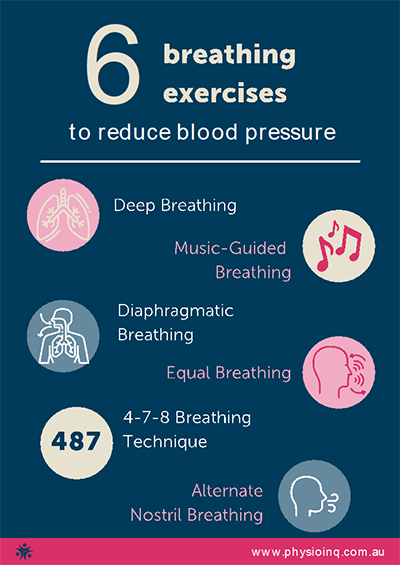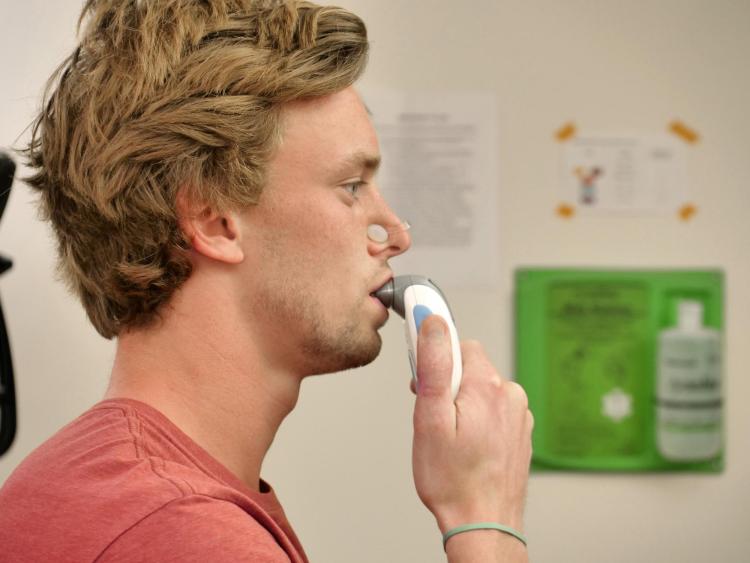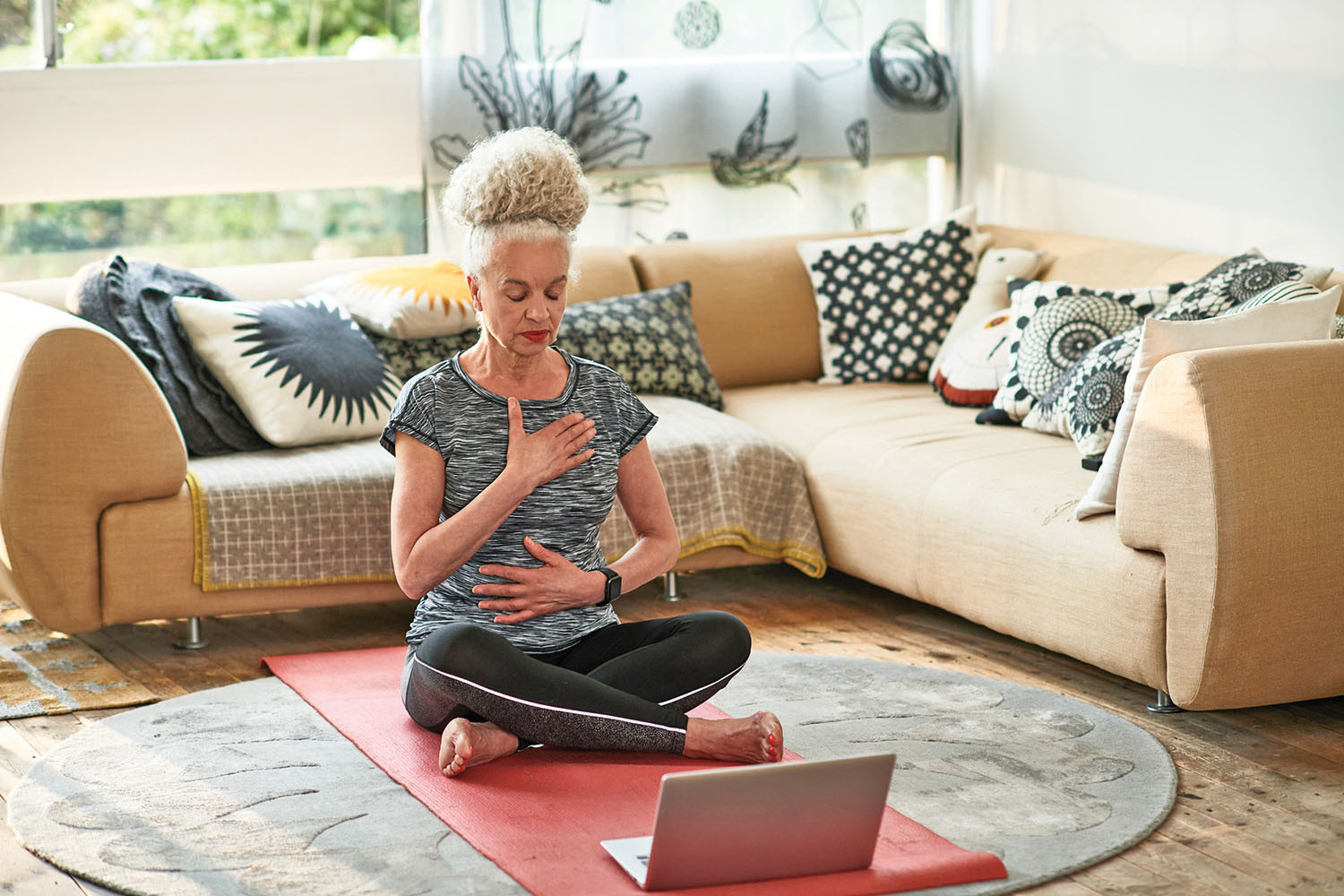This breathing exercise has been shown to lower blood pressure to the same extent as medication or exercise. A regular breathing practice can be as effective as taking medication in reducing blood pressure levels.

Credit: www.physioinq.com.au
The Importance Of Managing Blood Pressure
A groundbreaking breathing exercise has been found to lower blood pressure as effectively as medication or exercise. This technique, known as diaphragmatic breathing, strengthens the diaphragm muscles and improves blood flow, resulting in lower blood pressure levels. This natural and non-pharmacological method offers a promising alternative for managing hypertension.
Understanding The Risks Of High Blood Pressure
The Role Of Medication And Exercise In Managing Blood Pressure
Exploring Alternative Methods To Lower Blood Pressure

Credit: blog.optimalhealthsystems.com
Breathing Exercises: A Natural Approach To Lower Blood Pressure
Lowering blood pressure naturally is possible with breathing exercises. This specific exercise is proven to have the same impact as medication or exercise, making it an effective and convenient option to improve overall health.
The Benefits Of Breathing Exercises For Blood Pressure
One natural and effective approach to lower blood pressure is through breathing exercises. These exercises offer a range of benefits for individuals with hypertension. Deep breathing techniques promote relaxation and stress reduction, which can help to lower blood pressure. Additionally, regular practice of breathing exercises strengthens the diaphragm muscle and improves lung capacity, thereby increasing oxygen intake and supporting overall cardiovascular health. Furthermore, studies have shown that incorporating breathing exercises into daily routines can significantly reduce blood pressure levels, comparable to the effects of medication or exercise.
Different Types Of Breathing Exercises
There are various types of breathing exercises that can be used to lower blood pressure. One popular technique is diaphragmatic breathing. This exercise focuses on strengthening the diaphragm muscle, improving respiratory efficiency, and stabilizing blood flow. Other techniques include alternate nostril breathing, where individuals alternate blocking one nostril at a time while inhaling and exhaling, and paced breathing, which involves inhaling and exhaling to a specific rhythm. These different types of breathing exercises provide individuals with options to find the technique that best suits their preferences and needs.
How Breathing Exercises Compare To Medication And Exercise
When it comes to managing high blood pressure, breathing exercises offer a natural alternative to medication and exercise. One of the main advantages of breathing exercises is that they have no side effects, unlike many medications. Additionally, while exercise is also known to lower blood pressure, some individuals may have physical limitations or find it difficult to engage in regular exercise routines. Breathing exercises, on the other hand, can be done anytime and anywhere, making them accessible and convenient for individuals of all ages and abilities. With their ability to effectively reduce blood pressure and promote overall well-being, breathing exercises are a valuable and accessible tool for managing hypertension.
Implementing Breathing Exercises Into Daily Routine
Implementing breathing exercises into your daily routine has been shown to lower blood pressure as much as medication or exercise. This simple practice of focusing on your breath can have significant benefits for your overall health and well-being.
Getting Started With Breathing Exercises
Breathing exercises are a simple yet powerful tool that can help lower blood pressure and improve overall well-being. If you’re looking to incorporate these exercises into your daily routine, here are some tips to help you get started:
- Set aside dedicated time each day: Find a specific time that works best for you, whether it’s in the morning, during lunch break, or before bed. Consistency is key for reaping the benefits of breathing exercises.
- Choose a quiet and comfortable space: Find a peaceful environment where you can fully focus on your breathing exercises without distractions. This can be your bedroom, a quiet corner of your living room, or even outdoors if you find nature calming.
- Get into a comfortable position: You can choose to sit in a chair with your feet flat on the floor or cross-legged on a cushion on the floor. The goal is to find a position that allows you to relax your body while maintaining good posture.
- Start with deep belly breaths: Begin by taking slow, deep breaths. Inhale deeply through your nose, allowing your abdomen to expand as you fill your lungs with air. Exhale slowly through your mouth, releasing any tension or stress.
Tips For Consistency And Effectiveness
Consistency is key when it comes to breathing exercises, and here are some tips to help you stay on track and maximize their effectiveness:
- Set reminders: Use physical reminders, such as sticky notes or alarms on your phone, to prompt you to practice breathing exercises regularly. This will help establish a routine and make it a habit.
- Start with shorter sessions: If you’re new to breathing exercises, start with shorter sessions and gradually increase the duration as you become more comfortable. This will help you build up your lung capacity and stamina over time.
- Focus on your breath: During each session, focus your attention solely on your breath. Let go of any racing thoughts or distractions and bring your awareness back to your breathing rhythm. This will enhance the relaxation response and promote a sense of calm.
- Experiment with different techniques: There are various breathing techniques you can explore, such as diaphragmatic breathing, alternate nostril breathing, or guided imagery. Find the techniques that resonate with you and incorporate them into your practice.
Monitoring And Tracking Blood Pressure Results
While implementing breathing exercises into your daily routine, it can be beneficial to monitor and track your blood pressure results to measure the impact of this practice. Here’s how you can do it:
| Monitoring Method | How to Use |
|---|---|
| Home blood pressure monitor | Invest in a reliable home blood pressure monitor and follow the instructions provided. Take your blood pressure readings at regular intervals, such as once a week or once a month. |
| Record in a journal | Create a journal dedicated to tracking your blood pressure readings. Note down the date, time, and your readings. This will help you identify any patterns or changes over time. |
| Consult your healthcare provider | Share your blood pressure results with your healthcare provider during regular check-ups. They can provide guidance and help you interpret the readings. |
Remember, the benefits of breathing exercises may vary for each individual. It’s important to consult with your healthcare provider before making any significant changes to your routine, especially if you have underlying medical conditions or are taking medications for blood pressure management.

Credit: www.colorado.edu
Frequently Asked Questions For This Breathing Exercise Lowers Blood Pressure As Much As Drug Or Exercise
What Breathing Exercises Lower Blood Pressure?
Engaging in regular breathing exercises, such as diaphragmatic breathing, can help lower blood pressure as much as taking medication. These exercises focus on strengthening the diaphragm and increasing oxygen intake, leading to improved blood flow and lower blood pressure.
What Breathing Device Lowers Blood Pressure?
Resperate is a portable electronic device that helps lower blood pressure through slow, deep breathing. It’s approved by the FDA and available without a prescription.
What Exercise Lowers Blood Pressure?
Regular physical activity, such as walking, jogging, cycling, swimming, dancing, or high-intensity interval training, can help lower blood pressure. Another option is diaphragmatic breathing, which strengthens the diaphragm and improves blood flow. Breathing exercises done daily can also reduce blood pressure.
Does Buteyko Breathing Lower Blood Pressure?
The Buteyko breathing technique can help lower blood pressure. It focuses on diaphragmatic breathing, which strengthens the diaphragm muscle and improves blood flow, leading to lower blood pressure. Regular practice of this technique can be as effective as taking medication.
Conclusion
To effectively manage high blood pressure, incorporating a regular breathing practice is essential. This breathing exercise has been shown to be as effective as medication or exercise in lowering blood pressure levels. By focusing on slow and deep breaths, this technique strengthens respiratory muscles, improves oxygen intake, and stabilizes blood flow, leading to reduced blood pressure.
Incorporating this simple yet powerful breathing exercise into your daily routine can be a valuable non-pharmacological approach to managing hypertension. Remember, small changes can have a big impact on your health.

